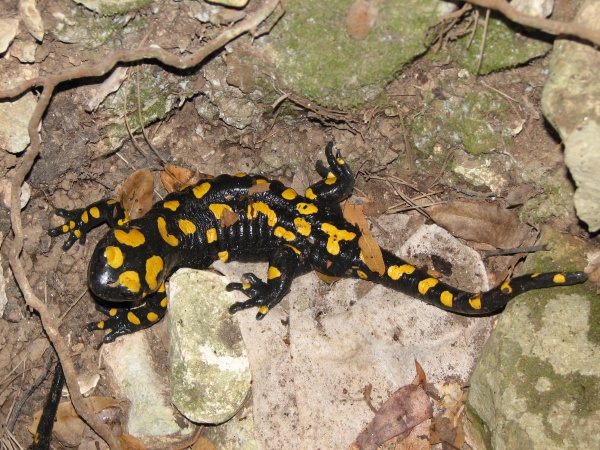Facts About Near Eastern fire salamander
The Near Eastern fire salamander, known as "arouss al-ayn" in Arabic, is a striking amphibian from the Salamandridae family. This species is native to several countries, including Iran, Iraq, Turkey, Syria, Lebanon, and Israel, where it typically inhabits subtropical dry shrublands and forests near rivers and freshwater springs.
One of the most distinctive features of the Near Eastern fire salamander is its black body adorned with yellow spots. Its skin is smooth and shiny, and there are several subspecies, each exhibiting unique color patterns. These salamanders are predominantly found in Anatolia, Turkey, and various regions of Iran, Iraq, Syria, Lebanon, and Israel. They favor habitats like forests, cork forests in Iran, damp woods in Turkey and Lebanon, and areas near water bodies such as springs and pools.
Near Eastern fire salamanders are nocturnal creatures, spending their days in hiding and emerging at night to search for food. During the breeding season, they display specific behaviors, with females laying eggs in ponds and both genders returning to the same breeding sites year after year.
In terms of diet, adult salamanders consume insects, earthworms, slugs, and small invertebrates, while the larvae primarily feed on crustaceans and mosquito larvae. Notably, they have been observed exhibiting cannibalistic tendencies, particularly when food is scarce.
Unfortunately, the Near Eastern fire salamander is listed as "Near Threatened" on the IUCN Red List. Their populations are declining due to habitat loss, pollution, and the introduction of predatory fish into their environments. In some countries, like Israel, where the species is considered "Endangered" national legislation provides them with protection, and various conservation efforts are underway.

 Israel
Israel